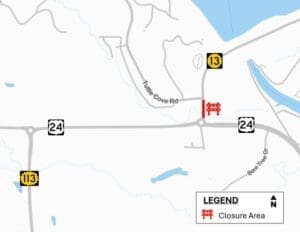By Trish Svoboda
The soybean gall midge, a new pest in the U.S., has been found in two northeast Kansas counties, Nemaha and Marshall. This pest, which lays eggs in soybean fields, causes significant damage to crops, leading to poor yields. Infestations typically start at the field edge and can cause total yield loss. Producers are advised to scout fields for wilting soybean plants and report any sightings of bright orange maggots, a sign of infestation, to local extension professionals or the K-State entomology department.
Soybean gall midge has distinctive physical characteristics: they are small, gnat-like flies, a few millimeters long, with bright orange bodies, mottled wings, and striped legs. The maggots start out cream-colored and turn bright orange as they mature.
Currently, there are no practical insecticide recommendations for treating soybean gall midge infestations due to their recent emergence. However, producers have other options to protect their crops. If a field has been heavily infested, it may be advisable not to plant nearby or to rotate to a different crop for a season or two. Another management technique is hilling soil at the base of plants early in the season to prevent adults from laying eggs in the stems.













